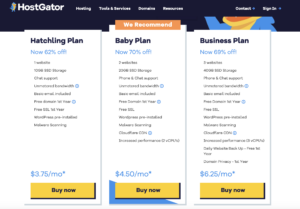What else do we want or need CSS to do? It’s like being out late at night someplace you shouldn’t be and a stranger in a trenchcoat walks up and whispers in your ear.
“Psst. You wanna buy some async @imports? I’ve got the specificity you want.”
You know you shouldn’t entertain the idea but you do it anyway. All your friends doing Cascade Layers. What are you, a square?
I keep thinking of how amazing it is to write CSS today. There was an email exchange just this morning where I was discussing a bunch of ideas for a persistent set of controls in the UI that would have sounded bonkers even one year ago if it wasn’t for new features, like anchor positioning, scroll timelines, auto-height transitions, and popovers. We’re still in the early days of all these things — among many, many more — and have yet to see all the awesome possibilities come to fruition. Exciting times!
Chris kept a CSS wishlist, going back as far as 2013 and following up on it in 2019. We all have things we’d like to see CSS do and we always will no matter how many sparkly new features we get. Let’s revisit the ones from 2013:
- ✅ “I’d like to be able to select an element based on if it contains another particular selector.” Hello,
:has()! - ❌ “I’d like to be able to select an element based on the content it contains.”
- ❌ “I’d like multiple pseudo-elements.”
- ✅ “I’d like to be able to animate/transition something to
height: auto;” Yep, we got that! - 🟠 “I’d like things from Sass, like
@extend,@mixin, and nesting.” We got the nesting part down with some progress on mixins. - ❌ “I’d like
::nth-letter,::nth-word, etc.” - ✅ “I’d like all the major browsers to auto-update.” This one was already fulfilled.
So, about a score of 3.5 out of 7. It could very well be that some of these things fell out of favor at some point (haven’t heard any crying for a new pseudo-element since the first wishlist). Chris re-articulated the list this way:
- Parent queries. As in, selecting an element any-which-way, then selecting the parent of that element. We have some proof it’s possible with :focus-within.
- Container queries. Select a particular element when the element itself is under certain conditions.
- Standardized styling of form elements.
- Has/Contains Selectors.
- Transitions to
autodimensions.- Fixed up handling of viewport units.
And we’ve got the vast majority of those under wraps! We have ways to query parents and containers. We’re exploring stylable selects and field-sizing. We know about :has() and we’re still going gaga over transitions to intrinsic sizes. We’ve openly opined whether there’s too much CSS (there isn’t).
But what else is on your CSS wishlist? Ironically enough, Adam Argyle went through this exercise just this morning and I love the way he’s broken things down into a user-facing wishlist and a developer-facing wishlist. I mean, geez, a CSS carousel? Yes, please! I love his list and all lists like it.
We’ll round things up and put a list together — so let us know!
- How to build a website with WordPress and what are the best plugins to use: Building a website with WordPress is an excellent choice due to its versatility, ease of use, and a vast array of plugins that enhance functionality. Here’s a comprehensive guide to building a WordPress website, along with recommendations for the best plugins.
- What does this property buzzword mean and how does it actually work? Gearing simply means borrowing money to buy an asset. Negative gearing can be a tax strategy used by investors and describes when the income (ie, the rent) made from an investment is less than the expenses it incurs, meaning it’s making a loss.
- How to Sell Your Ecommerce Business for the Best Value: Selling an ecommerce business can be a very profitable move. You can use the proceeds to invest in other projects, launch new ecommerce business websites, or even retire. For some startups, selling the business is the end goal. Whether you have a dropshipping website, sell with Amazon FBA, or own a large-scale ecommerce business, there’s an opportunity for you to sell.
- Comprehensive Guide to WordPress Website Development: Developing a WordPress website is a sequential process that requires careful planning, thoughtful execution, and consistent maintenance to ensure it meets the needs of users and achieves its intended goals. This involves a series of clearly defined stages, including planning, designing, content creation, optimisation, and ongoing maintenance.
- Top 10 High-Paying Jobs AI Won’t Replace in 2025: Artificial Intelligence (AI) is revolutionizing industries, automating repetitive tasks, and reshaping the global workforce. Despite its remarkable advancements, certain professions remain beyond AI’s capabilities due to their reliance on uniquely human traits like creativity, empathy, and critical thinking. This case study explores the 10 highest-paying, fastest-growing jobs in 2025 that AI won’t replace, delving into why these roles are indispensable and how they are evolving in an AI-driven world.
- Spill Your Guts: What To Wear To Olivia Rodrigo’s Australian Tour: Never afraid of screaming out all the dark, embarrassing things we’ve all thought before, Rodrigo sings about comparing herself to her boyfriend’s ex-girlfriend. If you want an edgy outfit that mimics the music…
- Top Social Media Plugins for WordPress to Increase Your Sites Reach and Engagement: If you are seeking to enhance your website’s reach and engagement on social media, you have come to the right place. In this article, we will delve into the premier social media plugins tailored for WordPress users. From Social Warfare to Jetpack, these plugins can facilitate seamless sharing of your content across diverse social platforms.Furthermore, we will provide recommendations to optimize your website’s visibility on social media. Keep an eye out for valuable insights!
- How to Change PuTTY’s Appearance: PuTTY is a widely-used SSH and telnet client for Windows and Linux hosting. While its default appearance is functional, you can customise it to improve aesthetics and usability. Below are the steps to modify PuTTY’s appearance, including changing the font, window size, colours, and cursor options.
- What programming languages does vBulletin use?: vBulletin was orginally written in perl and used a flat file database system. However, as sites grew they notice that sites could not cope with a large amounts of traffic. This problem has now been fully rectified when vBulletin was converted to php and a mysql database system.
What else do we want or need CSS to do?
CSS (Cascading Style Sheets) has evolved significantly since its inception, adding powerful features that were once unimaginable. However, as web design and development grow more sophisticated, developers and designers continue to encounter limitations in CSS that could inspire future enhancements.
Here’s an exploration of what we want or need CSS to do to meet modern demands:
1. Improved Layout and Grid Systems
While CSS Grid and Flexbox revolutionised layouts, there’s still room for improvement:
- Subgrid Enhancements: Subgrid is already a game-changer, but its adoption could be more streamlined, allowing greater flexibility when dealing with deeply nested layouts.
- Better Support for Overlapping Content: Simplified methods for layering elements, especially in responsive designs.
- Aspect Ratio Management: Enhanced controls for dynamically setting and adjusting aspect ratios without extra wrappers.
2. Native Container Queries
Container Queries, introduced in 2023, allow styles to depend on the size of a container rather than the viewport. However, developers desire:
- Simpler Syntax: Refinements to reduce verbosity and make them easier to integrate into complex designs.
- Broader Browser Support: Standardisation across all modern browsers to ensure consistent behaviour.
3. Style State Management
Currently, CSS is limited in handling certain states of components dynamically:
- Parent Selectors: A long-standing request is the ability to style parent elements based on the state or properties of their children (e.g.,
:has()selector). - Scoped Styles: The ability to scope styles to specific components or elements natively, reducing reliance on external libraries or frameworks like Shadow DOM in Web Components.
- Conditionally Applied Styles: Native support for applying styles based on complex logic, reducing dependency on JavaScript for dynamic behaviour.
4. Advanced Animations and Interactivity
CSS animations are robust but could be expanded further:
- 3D Transformations: Simplified syntax for creating and animating complex 3D objects or scenes.
- Physics-based Animations: Built-in properties for motion physics like bounce, inertia, and spring dynamics without relying on JavaScript libraries.
- Event-driven Animations: The ability to trigger animations based on more complex user interactions (e.g., hover states combined with scroll behaviour).
5. Enhanced Colour and Design Control
The introduction of CSS colour functions (e.g., color-mix() and lab() in modern specs) is promising, but:
- Dynamic Colour Blending: More intuitive tools for blending or generating colour palettes dynamically based on design systems.
- Theme-aware Design: Native support for light/dark mode and custom themes, allowing CSS to adapt styles based on global themes or user preferences.
- True Gradients: Radial and conic gradients have limitations—more flexible controls, such as non-linear gradients or texture-based gradients, are desired.
6. Typography and Text Manipulation
Typography remains a key area for improvement:
- Advanced Typographic Controls: Better handling of ligatures, hyphenation, and fine-tuned kerning.
- Variable Fonts Support: Simplified integration and manipulation of variable fonts for smoother animations and responsive designs.
- Vertical Text Alignment: Improved tools for managing complex text layouts, such as multi-line text alignment or text fitting into specific shapes.
7. Native Cross-Browser Consistency
Browser inconsistencies are a persistent challenge:
- Standardised Features: Better alignment in the implementation of newer CSS properties across browsers.
- Debugging Tools: Enhanced tools to identify and fix browser-specific issues directly within dev tools.
8. Better Media Query Features
CSS Media Queries revolutionised responsive design but still have limitations:
- Media Query Nesting: Allow nesting within rules for cleaner syntax and easier management of breakpoints.
- Orientation-based Queries: Better handling of device orientation changes and scenarios like foldable screens.
- Environmental Queries: Support for more contextual styling, such as adapting based on ambient light or even device capabilities like battery level.
9. Direct Integration with JavaScript and APIs
CSS lacks deeper interaction with JavaScript in some cases:
- Dynamic Variable Updates: More seamless integration with CSS custom properties (
--variables) to allow real-time updates from JavaScript. - API Interaction: Direct support for interacting with device APIs (e.g., sensors, cameras) for creative designs.
10. Native Responsive Images
Handling images for different screen sizes often requires complex workarounds:
- Image Aspect Ratio Control: Simplified, native solutions to dynamically scale images without distorting content.
- Adaptive Images: CSS handling multiple resolutions and pixel densities more intuitively for responsive designs.
11. Better Performance and Debugging
CSS performance impacts user experience, and debugging can be tedious:
- Performance Profiling: Tools to identify slow-rendering styles or layout bottlenecks.
- CSS Minification Support: Native options for optimising stylesheets without relying on external build tools.
12. Modularisation and Scalability
CSS for large-scale applications can become unwieldy:
- Component-based Styling: Built-in mechanisms for modular CSS, akin to CSS-in-JS but natively implemented.
- File Imports and Dependencies: Enhanced support for importing stylesheets conditionally or modularly.
Conclusion
While CSS has made tremendous strides, ongoing enhancements can make it more powerful, accessible, and developer-friendly. Features like broader container query support, advanced animations, and better browser consistency will empower designers and developers to craft more responsive, interactive, and scalable websites. By addressing these needs, CSS can continue to evolve as the backbone of modern web design.



